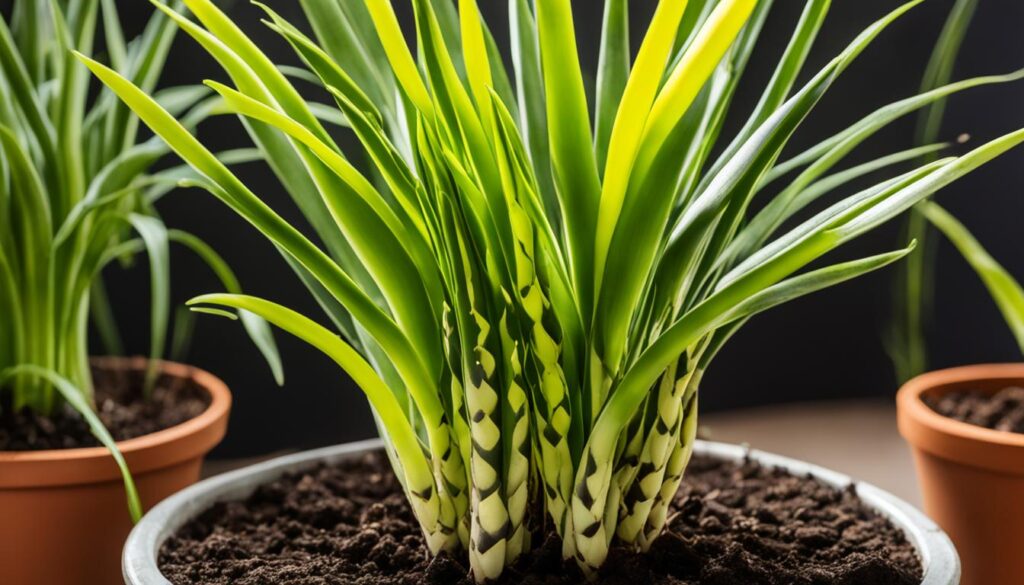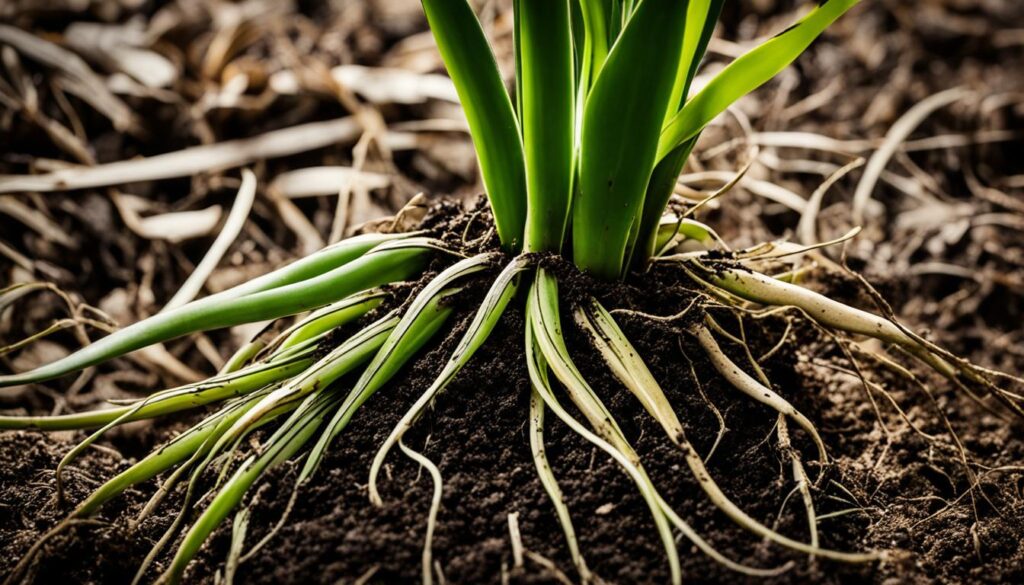Have you ever looked at a vibrant and lush snake plant and wished you could have more of them in your home? Well, you’re in luck because propagating snake plants is easier than you think. Whether you want to expand your indoor jungle or share the joy of growing plants with your friends and family, this step-by-step guide will teach you how to propagate snake plants successfully.
From water propagation to division and rhizome propagation, we’ll explore various methods to help you create new snake plants in no time. We’ll also address common questions and provide helpful tips to ensure your propagation journey is a success.
So, get ready to dive into the world of snake plant propagation and watch as your collection blossoms and thrives.
Key Takeaways:
- Propagating snake plants is a simple and rewarding process that allows you to create new plants from existing ones.
- There are four main methods of snake plant propagation: water propagation, soil propagation, division, and rhizome propagation.
- Each propagation method has its pros and cons, so choose the one that aligns with your preferences and resources.
- Following the step-by-step instructions and addressing common FAQs will increase your chances of successful propagation.
- With patience and care, you can expand your snake plant collection and bring beauty and greenery into your space.
Water Propagation
Water propagation is a simple and popular method to propagate snake plants. To propagate using water, take a leaf cutting from the mother plant and place the cut end in water, making sure to cover about 25% of the cutting.
Keep the cutting in indirect sunlight and change the water weekly. Once roots start to sprout, the cutting can be transferred to soil.
It’s important to note that variegated varieties may not retain their variegation through water propagation and that this method is generally slower compared to other propagation methods.
Steps for Water Propagation:
- Take a leaf cutting from the mother plant.
- Place the cut end in water, covering about 25% of the cutting.
- Keep the cutting in indirect sunlight.
- Change the water weekly to prevent stagnation.
- Wait for roots to sprout.
- Transfer the cutting to soil.
Note: Water propagation may result in slower root growth compared to other propagation methods and variegated varieties may not retain their variegation.
| Pros of Water Propagation | Cons of Water Propagation |
|---|---|
| Simple method of propagation | Slower root growth compared to other methods |
| Visible root growth | Variegated varieties may lose their variegation |
Soil Propagation
Soil propagation is another popular method for propagating snake plants. This method allows you to grow new plants from cuttings in soil, providing a stable environment for root development.
To begin soil propagation, start by cutting a leaf near the soil line of the parent plant. Divide the leaf into 2-inch pieces using clean gardening shears or a sharp knife.
Next, allow the leaf cuttings to callus for a couple of days. This step is crucial as it helps prevent infections and promotes healthy root growth.
After the callus forms, prepare well-draining potting soil in a small pot. Make small holes in the soil and insert the leaf cuttings, burying them partially. Ensure that the leaf cuttings have adequate air circulation and space to develop roots.
Water the soil lightly, moistening it without overwatering. Place the pot in a location with bright, indirect sunlight to encourage growth.
It’s important to note that soil propagation allows for mixing different snake plant varieties in one pot, making it a convenient method for creating unique plant arrangements.
However, it’s worth mentioning that propagating snake plants from cuttings in soil may not retain the variegation of the original plant. The new plants may have solid green leaves, which is a common trait in soil-propagated snake plants.
Lastly, please keep in mind that root growth isn’t visible unless the plant is dug up. Patience is key when propagating snake plants in soil, as it takes time for the roots to establish themselves.
Tips for Successful Soil Propagation:
- Use well-draining potting soil to prevent waterlogged roots.
- Allow the leaf cuttings to callus before planting them in soil.
- Place the pot in a location with bright, indirect sunlight.
- Water the soil lightly, ensuring it remains moist but not soaked.
| Pros | Cons |
|---|---|
| Allows mixing different snake plant varieties in one pot | New plants may have solid green leaves instead of variegation |
| Stable environment for root development | Root growth isn’t immediately visible |
Propagation by Division
Propagation by division is a faster and efficient method of propagating snake plants compared to leaf propagation. This method involves dividing the root clump of the parent plant into sections, each containing at least three rhizomes or a snake plant pup. Here’s how you can propagate snake plants through division:
- First, lay the parent plant down and carefully slide it out of its pot. Be gentle to avoid damaging the roots.
- Next, using a sharp knife or shears, divide the root clump into sections. Make sure that each section has sufficient rhizomes or a healthy snake plant pup attached.
- Once you have divided the root clump, plant each section in a well-draining pot using potting soil. Ensure that the pot has drainage holes to prevent waterlogging.
- Place the pots in a location with indirect sunlight, as snake plants prefer bright but indirect light.
- Water the newly potted sections sparingly, allowing the soil to dry out slightly between waterings.
Propagation by division is particularly beneficial for larger snake plants with multiple growths. This method allows you to create new plants while maintaining the original plant’s size and structure. It is an excellent way to expand your snake plant collection or share plants with friends and family.
Rhizome Propagation
Rhizome propagation is a fast and efficient method for propagating snake plants. This technique allows you to create new plants without having to divide the mother plant. To propagate your snake plant using rhizomes, follow these steps:
- Slide the plant out of its pot and carefully examine the root system for rhizomes. Rhizomes are horizontal, underground stems that store nutrients and produce new shoots.
- Once you locate the rhizomes, use a clean and sharp knife or shears to cut them from the base of the plant. Ensure that each rhizome has at least one healthy bud.
- After cutting the rhizomes, allow them to callus for 1-2 days. Callusing refers to the formation of a dry, rough layer on the cut surface, which helps prevent rotting.
- Once the callus has formed, prepare a well-draining potting mix suitable for snake plants.
- Repot the rhizomes in the prepared potting mix, making sure to cover them with soil and leave the bud or growing tip exposed.
Rhizome propagation is particularly beneficial for variegated snake plants as it allows you to maintain the unique and attractive patterns on the leaves. However, it’s important to note that uprooting the parent plant carries the risk of potential damage, so exercise caution when performing this propagation method.

Snake Plant Propagation FAQs
Here are some frequently asked questions about snake plant propagation:
1. What is the timeline for new growth in snake plant propagation?
The timeline for new growth in snake plant propagation can vary, but generally, it can take about six to eight weeks for roots to start growing under the right conditions.
2. Why won't my snake plant grow?
If your snake plant is not growing, several factors could be responsible. It could be due to insufficient light, water, or nutrients, or excessive direct sunlight. To ensure successful growth, provide your snake plant with sufficient indirect sunlight, avoid overwatering, and use well-draining soil. Additionally, using a new pot with drainage holes will help manage water properly.
“Give your snake plant the right conditions, and it will thrive.” – Horticulture Expert
Here’s a summary of the key points to remember for successful snake plant propagation:
- Provide indirect sunlight.
- Avoid overwatering.
- Use well-draining soil.
- Use a new pot with drainage holes.
Now that you have a better understanding of snake plant propagation and have answers to common questions, you’re well-equipped to propagate your snake plants successfully.
| Question | Answer |
|---|---|
| What is the timeline for new growth in snake plant propagation? | It can take six to eight weeks for root growth under the right conditions. |
| Why won’t my snake plant grow? | There may be insufficient light, water, or nutrients, or excessive direct sunlight. Providing the right conditions will help promote growth. |
Remember to be patient and provide the necessary care and conditions for your snake plants to thrive!
Pros and Cons of Water Propagation
Water propagation for snake plants has both advantages and disadvantages. Understanding the pros and cons can help you decide if this method is the right choice for propagating your snake plants.
Advantages of Water Propagation for Snake Plants
- Simple DIY Method: Water propagation is a beginner-friendly method that requires minimal supplies and expertise. It’s a great option for those new to plant propagation.
- Visible Root Growth: One of the benefits of water propagation is that you can see the roots growing, providing a visual representation of the plant’s progress.
Disadvantages of Water Propagation for Snake Plants
- Variegation Loss: While water propagation is effective for propagating snake plants, it’s worth noting that cuttings from variegated varieties may not retain their variegation as successfully as other methods.
- Slower Method: Compared to other propagation techniques, water propagation tends to be slower in terms of root development and overall plant growth.
Despite its disadvantages, water propagation can still be a successful method for propagating snake plants, particularly for those looking for a simple and visually engaging approach. However, it’s important to weigh the pros and cons and consider alternative methods that may better suit your personal preferences and goals.
Pros and Cons of Soil Propagation
Soil propagation for snake plants offers both advantages and disadvantages. Understanding these pros and cons will help you decide whether this method is right for you.
Advantages of Soil Propagation for Snake Plants
- Flexibility in Potting: With soil propagation, you have the freedom to mix different snake plant varieties in one pot, creating a beautiful arrangement of different leaf patterns and colors.
- No Need for Water: Unlike water propagation, soil propagation eliminates the need to continuously keep root cuttings in water. Once the cuttings are placed in soil, they can establish roots and grow without constant monitoring.
Disadvantages of Soil Propagation for Snake Plants
- Variegation Loss: A potential downside of soil propagation is that new plants may not exhibit the variegations seen in the parent plant. If maintaining consistent variegation is a priority for you, you might consider other propagation methods.
- Hidden Root Growth: Unlike water propagation, where you can visually observe the root growth, soil propagation requires digging up the plant to see the root development. This may limit your ability to monitor the progress of the propagation.
Despite these disadvantages, soil propagation remains a popular and effective method for propagating snake plants. Its flexibility in potting and the independence from constant water monitoring make it a viable option for many plant enthusiasts.

Pros and Cons of Propagation by Division
Propagation by division offers several advantages and disadvantages for snake plant propagation.
Advantages of Division Propagation for Snake Plants
- Faster propagation: Compared to leaf propagation, division propagation allows for quicker growth and the establishment of new plants.
- Retains variegation: When dividing snake plants, the new leaves will retain the variegation of the original plant, preserving its unique and attractive patterns.
Disadvantages of Division Propagation for Snake Plants
- Requires a large plant: Successful division propagation requires a mature snake plant with multiple growths to ensure each division receives enough rhizomes or snake plant pups for healthy growth.
Despite the requirement for a sizable plant, division propagation remains a popular method for propagating snake plants due to its faster results and the ability to preserve variegation.
Next, let’s explore the pros and cons of rhizome propagation for snake plants.
Pros and Cons of Rhizome Propagation
Rhizome propagation offers several advantages and disadvantages when it comes to propagating snake plants. Understanding these pros and cons can help you make an informed decision about whether or not to use this method.
Advantages of Rhizome Propagation for Snake Plants
- Rapid propagation: Rhizome propagation is known for its fast results. With this method, you can quickly increase the number of snake plants in your collection.
- No need to divide the mother plant: Unlike other propagation methods, rhizome propagation allows you to create new plants without dividing the existing mother plant. This means you can keep the original plant intact.
- Suitable for variegated snake plants: Rhizome propagation is particularly beneficial for variegated snake plants. It helps maintain the desirable variegation patterns in the new plants.
Disadvantages of Rhizome Propagation for Snake Plants
- Potential damage to the parent plant: Uprooting the parent plant to access the rhizomes can potentially harm it if not done carefully. It’s crucial to exercise caution during the process to minimize any potential damage.
| Pros of Rhizome Propagation | Cons of Rhizome Propagation |
|---|---|
| Rapid propagation | Potential damage to the parent plant |
| No need to divide the mother plant | |
| Suitable for variegated snake plants |
Conclusion
Propagating snake plants can be done using four main methods: water propagation, soil propagation, propagation by division, and rhizome propagation. Each method has its pros and cons, so it’s important to choose the one that suits your needs and preferences.
If you prefer to witness visible root growth, water propagation is a great option. This method allows you to see the roots sprouting and is relatively simple to do. However, keep in mind that variegated varieties may lose their variegation through this method, and it generally takes longer compared to other techniques.
If you are looking for faster results, division may be the way to go. This method involves separating the plant into different sections, each with a rhizome or snake plant pup attached. It’s best suited for larger snake plants with multiple growths.
On the other hand, if you want to mix different snake plant varieties in one pot or ensure that new plants retain the variegation of the original plant, soil propagation is a good choice. This method requires cutting a leaf near the soil line and planting the leaf cuttings in well-draining potting soil.
Lastly, rhizome propagation offers a fast way to propagate snake plants without the need for dividing the mother plant. It’s especially suitable for variegated snake plants. However, keep in mind that uprooting the parent plant can potentially damage it if not done carefully.
By following the step-by-step instructions provided for each method and addressing common FAQs, you can successfully propagate snake plants and expand your garden. Choose the method that aligns with your gardening preferences and enjoy watching your snake plant collection thrive and multiply.
FAQ
How do I propagate a snake plant?
Snake plants can be propagated using four main methods: water propagation, soil propagation, propagation by division, and rhizome propagation. Each method has its own set of steps and requirements.
How do I propagate a snake plant in water?
To propagate a snake plant in water, take a leaf cutting and place the cut end in water. Keep the cutting in indirect sunlight, change the water weekly, and transfer the cutting to soil once roots start to sprout.
How do I propagate a snake plant in soil?
To propagate a snake plant in soil, cut a leaf near the soil line and divide it into 2-inch pieces. Allow the cuttings to callus for a couple of days, then plant them in well-draining potting soil.
How do I propagate a snake plant by division?
To propagate a snake plant by division, lay the parent plant down and divide the root clump into sections, making sure each section has at least three rhizomes or a snake plant pup attached. Plant the sections in well-draining pots.
How do I propagate a snake plant using rhizomes?
To propagate a snake plant using rhizomes, cut the rhizomes from the base of the plant and allow them to callus for 1-2 days. Then, repot the rhizomes in well-draining potting mix.
How long does it take for snake plant propagations to grow?
In the right conditions, root growth for snake plant propagations can take six to eight weeks. However, it may vary depending on factors such as light, water, and nutrients.
Why isn’t my snake plant propagation growing?
Lack of growth in a new snake plant propagation may be due to insufficient light, water, or nutrients, or excessive direct sunlight. It’s important to provide sufficient indirect sunlight, avoid overwatering, and use well-draining soil.
What are the pros and cons of water propagation for snake plants?
Water propagation for snake plants has the advantage of being a simple DIY method with visible root growth. However, variegated varieties may not retain their variegation, and this method is generally slower compared to other propagation techniques.
What are the pros and cons of soil propagation for snake plants?
Soil propagation for snake plants allows for mixing different varieties in one pot and does not require keeping root cuttings in water. However, new plants may not have variegations, and root growth is not visible unless the plant is dug up.
What are the pros and cons of propagation by division for snake plants?
Propagation by division is a faster method compared to leaf propagation, and the new leaves retain the variegation of the original plant. However, this method requires a large snake plant with multiple growths to ensure successful division.
What are the pros and cons of rhizome propagation for snake plants?
Rhizome propagation is fast and does not require dividing the mother plant. It is also suitable for variegated snake plants. However, uprooting the parent plant can potentially damage it if not done carefully.



